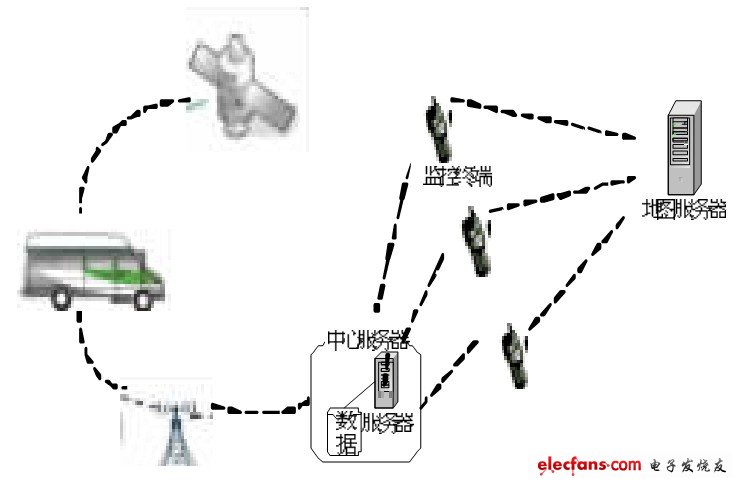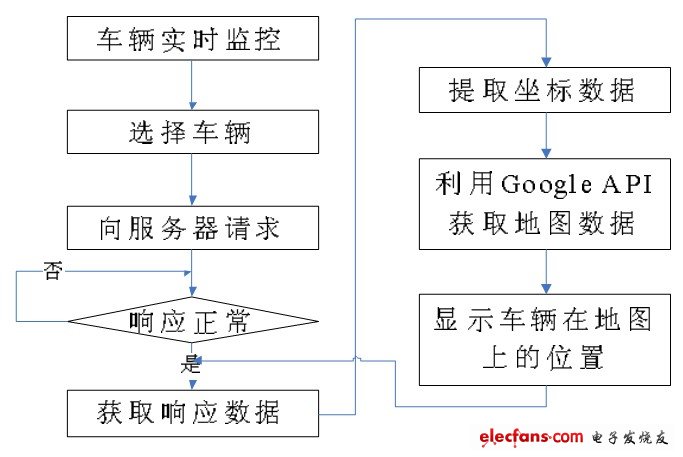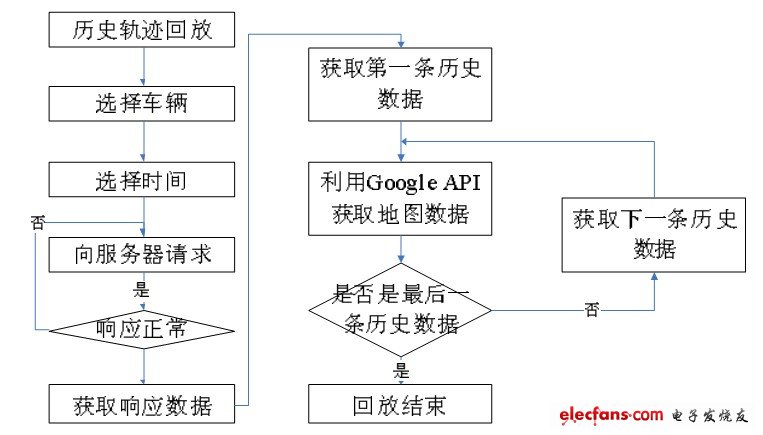1 Overview
With the full rollout of 3G services in China, smartphone performance and user groups continue to rise, it is an inevitable trend of social informatization to extend the powerful application service capabilities of the Internet to terminals and provide users with information services anytime, anywhere. GIS technology has also changed from traditional stand-alone applications to Internet-based applications. With the rapid development of smart phones, smart phone platforms will become a new application platform for GIS technology Internet applications.
2 Android
Android is an operating system based on the Linux kernel. It is a mobile phone operating system announced by Google on November 5, 2007. It was developed by Google in the early days and later by the Open Handset Alliance. It uses a software stack (software STack, also known as software stack) architecture, which is mainly divided into three parts. The underlying Linux kernel only provides basic functions; other application software is developed by the companies themselves, and some programs are written in Java. At present, the Android SDK has released version 2.2. Compared with previous versions, both the function and the execution speed of the application have been greatly improved and improved.
3 Overall structure of the vehicle monitoring and management platform
The vehicle monitoring system is composed of four parts: vehicle-mounted terminal, data center, monitoring terminal and map server. The vehicle-mounted terminal transmits the collected GPS positioning information and vehicle status information to the data center through the GPRS network, and the data center saves the information and forwards it to the monitoring terminal. After the monitoring terminal obtains the information, it is displayed in combination with the map information provided by the map server, which is intuitive The display monitors the current state of the vehicle and gives instructions to the vehicle-mounted terminal. (see picture 1)

Figure 1 Vehicle monitoring and management system architecture
3.1 Car terminal
The vehicle-mounted terminal is mainly composed of a GPS signal receiving module, a data processing module and a GPRS module. The GPS signal module mainly receives GPS signals from positioning satellites, and the data processing module collects GPS signals of the GPS signal module and periodically sends GPS positioning data to the background monitoring center through the GPRS module to realize real-time monitoring.
3.2 Data Center
The data center includes a central database and data communication services. The central database stores GPS data and other data; the data communication service is based on the C / S mode, and its main function is to maintain the connection between the vehicle-mounted terminal, the monitoring terminal and the data center, and to undertake the bridge between the vehicle terminal data and the monitoring terminal data.
3.3 Monitoring terminal
The monitoring terminal is connected with the data center server by using the monitoring management system on the smart phone (Android smart phone), receiving the vehicle terminal to forward the data, and issuing control instructions. The monitoring and management platform is a C / S mode application that provides users with a map-based monitoring and management platform, including vehicle background management and vehicle monitoring system. The main functions of the vehicle monitoring system include electronic map services and vehicle real-time monitoring and tracking , Playback of vehicle historical track, vehicle fence service, alarm processing module, etc. See section 4 for specific design.
3.4 Map server
The map server in this system refers to the map server provided by Google. The monitoring terminal uses the Google API plug-in that comes with the Google Android system to directly access the map server, provide the electronic map required by the monitoring user, and provide intuitive visual geographic information for the user's monitoring.
4 Design of monitoring management system based on Android
The monitoring management based on Android mainly includes monitoring and management. Management is the management of vehicle-related information, including basic driver information, basic vehicle information, vehicle records, alarm records, etc .; monitoring is based on electronic maps to monitor vehicles, and functions include real-time tracking of vehicle positions and playback of vehicle historical tracks , Vehicle fence setting, alarm information processing, etc. The following focus is mainly on the discussion of map-based vehicle monitoring design.
4.1 Google API plugin
The Google API plug-in is an extension of the Android SDK development environment. Through this plug-in, Android applications can easily access Google services and data. The core function of the plug-in is a map external library, through which powerful map functions can be added to Android applications.
4.2 Real-time vehicle monitoring
The user monitors the location of the vehicle in real time on an electronic map. This system uses the Google API plug-in on Android to call the map server raster image data to give the map display. (See Figure 2) The user wants to monitor the vehicle in real time and display his vehicle position information on the map. First, the user needs to select the vehicle and initiate a real-time monitoring request to the server. After receiving the positioning information sent back by the vehicle-mounted terminal, the central server forwards it to the monitoring terminal. After obtaining the positioning information, the relevant map of the current location is obtained through the Google API plug-in and presented to the user. The entire process is the result of the collaborative work of the central server and the Google map server, which efficiently integrates distributed network resources.

Figure 2 Real-time vehicle monitoring process
4.3 Historical track playback
The historical track is to reproduce the driving situation of the vehicle within a certain period of time, which is shown in the form of points and lines on the map. The monitoring system first needs to initiate a request to the central server to request the historical data of a certain vehicle for a certain period of time. After receiving the request, the central server queries the historical vehicle data from the database during this period of time, packages it and sends it to the monitoring terminal. The monitoring terminal then calls the plug-in to obtain map information for display. (See Figure 3) Here, the historical data sent back by the central server may not be all the data within a certain period of time in the vehicle-mounted terminal. During a certain period of time requested, the vehicle may stay at a certain position or move in a smaller area. At this time, the monitoring terminal does not need to display all the data of this period, just display these points as a position That is, when the historical track is played back, the terminal of the vehicle stays at a certain position on the electronic map for too long, giving the user the illusion of "crash", which improves the user's intuitive feeling and reduces the data transmission between the central server and the monitoring terminal .

Figure 3 Historical track playback process
It is worth noting that when there is too much historical data, the monitoring terminal needs a longer transmission time when receiving data. In order to avoid excessive waiting for users, the central data server can send the data in batches in batches, allowing the monitoring terminal to receive data while The data is displayed in an asynchronous manner, thereby improving the working efficiency of the system.
Conclusion
Based on the Android smart phone platform, this paper implements the design of the vehicle monitoring and management system, and provides a flexible and fast solution for the vehicle monitoring auxiliary decision. A monitoring system like this has been widely used in various industries. With the deepening of applications and the development of integrated technology, it will affect people's lives more.
Magnetic Ring Inductors,High Current Manganese Zinc Toroidal Inductors,Manganese Zinc Magnetic Ring Inductor Power,Toroidal Plug-In Inductors
Shenzhen Sichuangge Magneto-electric Co. , Ltd , https://www.rodinductor.com